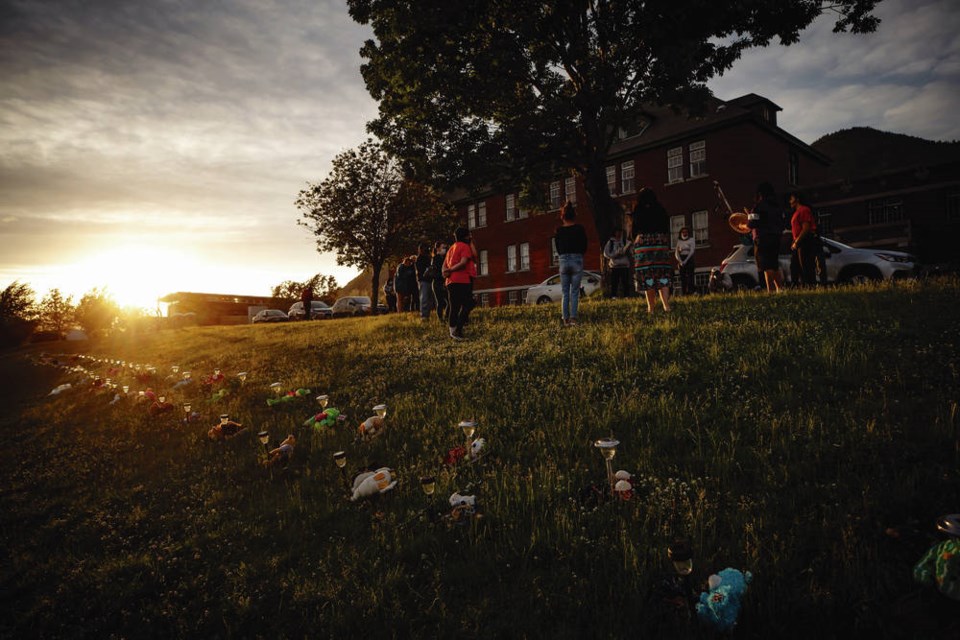Some may find this column disturbing, as it is about the deaths of Indigenous people a century or more ago. Moreover, in quoting from a 1922 report, some of the words used then (e.g. Indians) are not acceptable today. But it is important to quote verbatim. I am grateful to Andrew Nikiforuk, whose June 2 article in The Tyee reminded me of this story.
I cannot imagine what Indigenous people might have felt if they read a recent letter in the Times Colonist about the discovery of the unmarked graves of Indigenous children in Kamloops. As part of what seems to be an attempt to downplay the significance of the deaths, the writer stated “without knowing what killed the Aboriginal children in Kamloops, there is no reason to suspect there was criminal activity.” He is wrong, very wrong, as are others who may think like him.
There was a crime, indeed “a national crime”, and it was called that 99 years ago. In a 1922 booklet, The Story of a National Crime, Dr. Peter Bryce, chief medical officer of the Immigration and Indian Department (as it was then called) from 1904 to 1921, described what had happened to the health of Indigenous people, including in the residential schools, as a “criminal disregard for the treaty pledges to guard the welfare” of Indigenous people. (His report is available online.)
But his reports were largely ignored by the government and he was compelled by his oath of office to not disclose what he knew. So not only was there a crime, it was covered up until Bryce retired in 1921 and felt free to speak out.
Each year from 1904 to 1914, Bryce states in his 1922 booklet, he “wrote an annual report on the health of the Indians, published in the Departmental report.” And with specific reference to the residential schools, he noted: “The annual medical reports from year to year made reference to the unsatisfactory health of the pupils.”
In 1907, he also made a “special inspection of thirty-five Indian schools in the three prairie provinces.” The report on this, he wrote, “was published separately [and] the recommendations contained in the report were never published and the public knows nothing of them.” This 1907 report found that in the 15 years of their existence “24 per cent of all the pupils which had been in the schools were known to be dead” (so probably an under-estimate), while in “one school on the File Hills reserve, which gave a complete return to date, 75 per cent were dead at the end of the 16 years since the school opened.”
Then, in 1909, he undertook a special investigation of eight schools in the Calgary area, finding very high levels of TB in the schools and in the Indigenous population. But, Bryce reported, “no action was taken by the Department to give effect to the recommendations made” by the 1909 and 1907 reports, and a letter he wrote to the minister in 1911 complained that “I have not received a single communication with reference to carrying out the Suggestions of our [1909] report.”
Instead, in 1913, Duncan Scott, whom Bryce — in a 1911 letter to the minister — had already accused of actively opposing any action on his reports, was made deputy minister of the department, with predictable results. In June 1914, he wrote to Bryce putting a stop to his annual reports.
In fact, Bryce wrote in 1922, “from 1913 up to the time when Dr. W. A. Roche [who had been appointed minister in 1913] was eliminated from the government in 1917 … the activities of the Chief Medical Inspector of the Indian Department, had in practice ceased.”
So yes, there was a crime, both in the “criminal disregard” of the obligations of the government to protect the health of Indigenous people, perhaps especially in the residential schools, but more generally. And part of that criminal disregard was the ignoring of Bryce’s reports and recommendations, and the suppression both of the reports and the work of Bryce.
Facing this truth is one step in the process of reconciliation.
Dr. Trevor Hancock is a retired professor and senior scholar at the University of Victoria’s School of Public Health and Social Policy.



